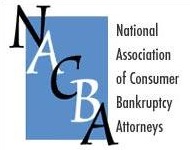 Read any interesting tax returns lately?
Read any interesting tax returns lately?
As bankruptcy lawyers, we’re required to collect them from our clients and funnel them to the trustee.
But, are you reading them?
Often, as a former employee used to say, they’re dry as dinosaur bones.
But almost as equally, they provide new information or clues about assets and activities of your client not previously disclosed.
Found in the tax return
Let’s start a list of things you might find perusing your client’s 1040:
- Interest income- does the list of payors match the scheduled accounted or accounts closed in the last year?
- Distributions from retirement accounts
- Gains or losses from sales of stock
- Total income for the year for the SOFA entry
- Investment real estate
- Charitable contributions- useful perhaps for means test purposes, and for SOFA transfers
- Business expenses – useful in projecting net income; remember to exclude depreciation for bankruptcy purposes
- Interests in partnerships or estates
- Form 1099 from debt settlement or foreclosures
- Business assets subject to depreciation
- Dividend income
- Student loan interest
The plot line in a tax return doesn’t usually make scintillating reading, but it’s worth doing. There’s no feeling quite as foolish as encountering questions at the 341 meeting that the trustee got from reading the return when you haven’t.
Image courtesy of Makuahine Pa’i Ki’i








I recently learned my lesson with this. After looking through a client’s income tax return and seeing substantial “interest income,” I inquired about it. Turned out this client had a rather large account they neglected to tell me about.
If I did not review the tax return, I would have never revisited this question with my client.
Good work. You need the occasional “find” to chum you along reading this stuff.
i read them all the time and sometimes find them to be a treasure trove of clues. everything you said goes double for clients who are self-employed or own businesses (and their corporate returns).
I have been doing this since I started filing cases again. I am amazed at what I can find out. The information is there and we must look at it. Don’t forget about bank statements as well.